How are your harmonic lungs feeling? Never mind that, really. Despite the name, Songs of Silence is not in fact a SingStar-esque venture for me to embarrass myself in front of my loved ones (again). Instead, it’s a turn-based strategy game mixed with automated battles, card-driven special abilities and hero management. Bet that was as easy to read as a quantum physics manual.
Joking aside, Songs of Silence is an indie game with a big ambition. Combining grand strategy kingdom management alongside micro battling tactical decision making is quite the task. For the most part, Chimera Entertainment succeed in their venture. As you might also expect, it’s hampered by technical issues when the armies clash on grand scales. Moreover, while the term “difficulty spike” normally applies, here it’s more of a “difficulty Everest” scenario.
Mount your trusty steed, ride to the front of your troops and prepare to blare out an inspirational hymn, Songs of Silence has plenty of melodic conflict to beseech upon you.
Sound of Silence Violence
Let’s delve right into the crescendo of this song and answer the most glaring question: can Songs of Silence control well on a console? To my pleasant surprise, the answer is (mostly) a resounding yes. The turn-based overworld strategy is easy to navigate and the systems are relatively streamlined, making it easy to hop in and out of settlements, recruit battalions and move groups of forces at a time.
In battle, everything happens via an automated AI system, meaning you only have to worry about unit composition, formation and lashing out abilities via cards. Don’t be deceived, Songs of Silence is categorically not a deck builder. The cards simply represent your chosen hero’s abilities, and they’re on timers throughout battles. The majority of your input during a conflict is selecting each ability and choosing where to place it, which again works in favour of a controller.
The control scheme is initially a little finnicky as you get to grips with using L2 or R2 to select cards in the heat of combat. Thankfully, the game enters slow motion to give you time to prep where to place an ability. Alternatively, you can pause and start the action whenever you want, giving you some much needed breathing room. Obviously, this isn’t as optimal as a mouse and keyboard, but Songs of Silence works impressively well on a DualSense.
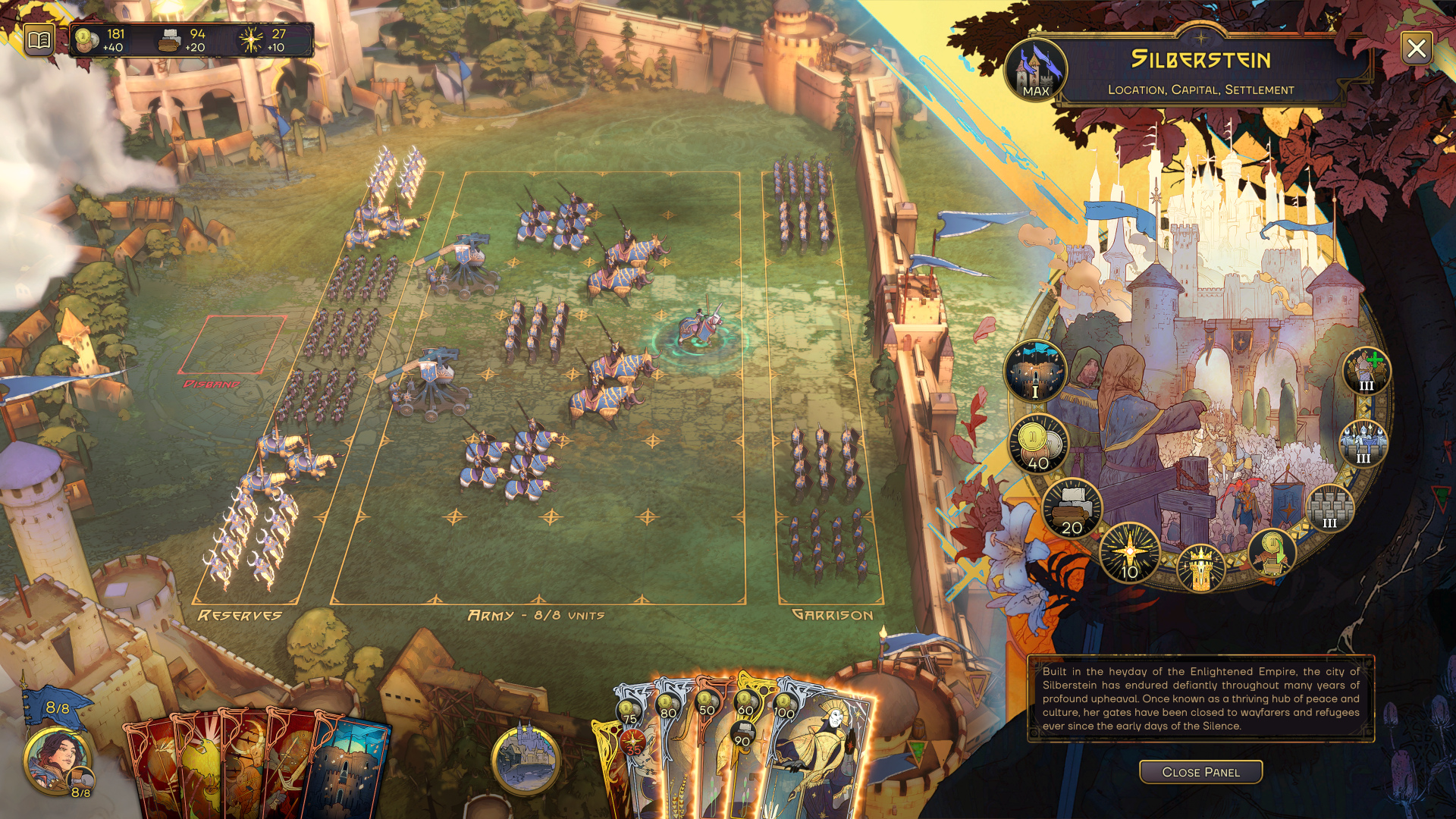
Silence In The Kingdom
Songs of Silence is made up of three core modes: campaign, skirmish and multiplayer. In all three you’ll divide your time between the grand strategy kingdom development and then the combat itself. We’ll start with the former. Regardless of what mode you’re in, you’ll need to capture settlements, castles and defend your capital from invasion. To do so, you command up to a handful of heroes and recruit battalions into their armies to support them.
Conquering landmarks is essential to gain access to continuous resources, to further fuel more expansion and army development. Movement and combat actions will exhaust each hero, limiting them to a couple of actions per turn. As such, the strategy feels relatively straightforward: build up forces, attack as many settlements as you can, rinse and repeat until all opponents are defeated. Once you’re standing atop the mountain of fallen foes, declare victory.
Due to the interface being quite intuitive and the focus on simple expansion, it’s easy to get into Songs of Silence. The strategy element can be addicting once you start taking over chunks of a given map and swarming an enemy capital is supremely gratifying. The stealth mechanic feels a bit flimsy, especially in the campaign missions that require extended use of it, and when the AI builds up ahead of steam, it will completely obliterate you like prime Napoleon, but we’ll get to that.
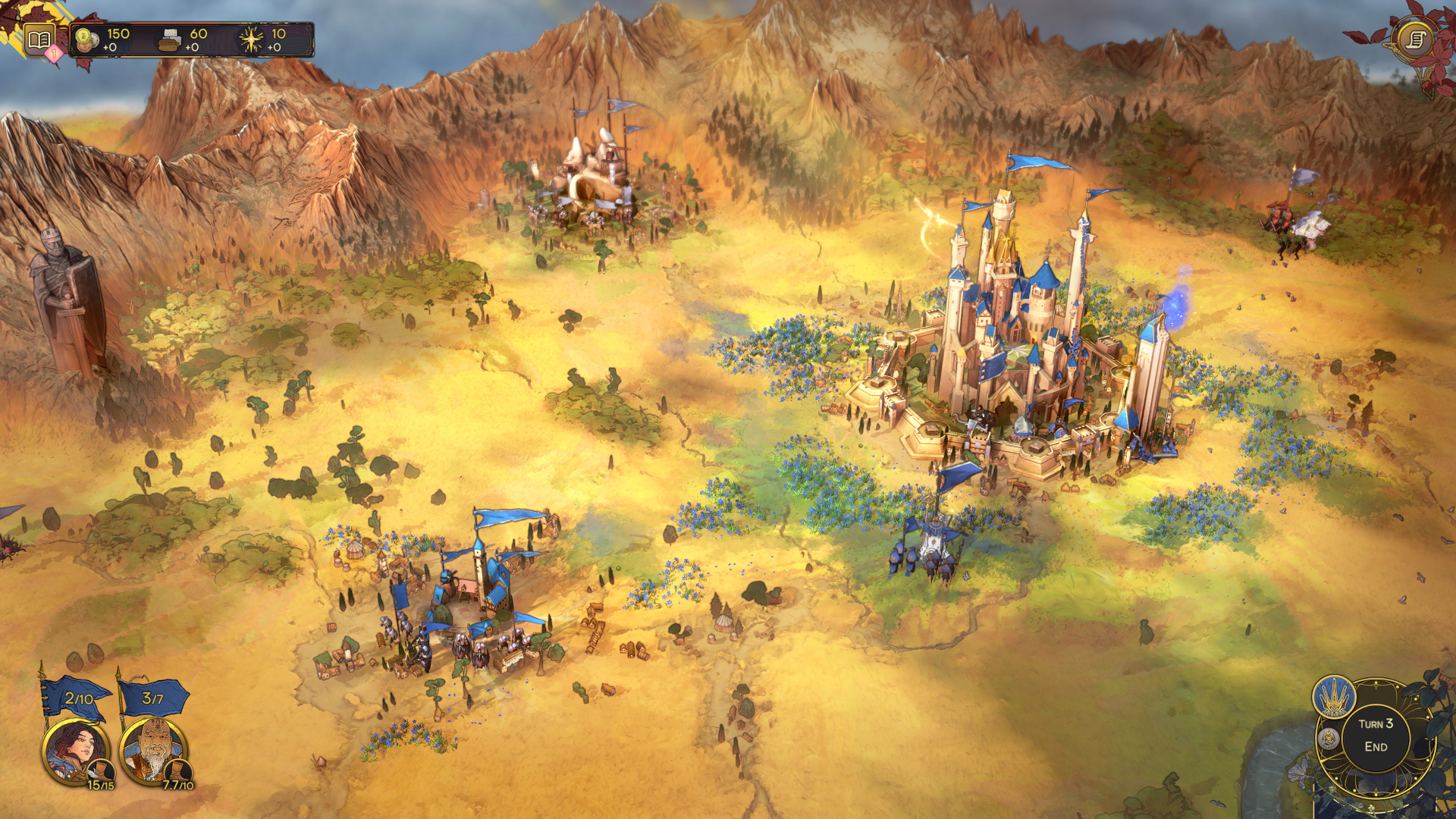
Top of The Shots
Crossing the map and conquering towns or castles will naturally lead you into battles. As mentioned before, Songs of Silence’s clash of swords is an auto-battler affair. Your units collide with the enemies’ thanks to AI, and it’s your job to buff your troops while debuffing the opponent’s units. Right off the bat, I did find the AI to be inconsistent. The carnage of each encounter means dozens of troops colliding and bouncing off of each other, meaning it can be hard to understand who’s even winning at times.
That confusion can cause some detachment from the action. It’s hard to feel like my strategy or use of abilities matters if I have no clue how many of my swordsman are even still alive in the glut of chaos. However, it does mean that tactically selecting which heroes and which abilities you take forth into battle becomes more important. I felt a sense of trade-off between having no real input in the combat itself, but setting up for success was incentivised, to a degree.
However, particularly on some missions in the campaign, a lot of this goes out of the window. More often, the army with the strongest, biggest units would just straight up decimate an entire army, even when it seemed illogical. The AI also has an annoying habit of using types that can just jump over your melee forces and eradicate your ranged troops. You can do the same back, but mine never seemed as effective as theirs. Overall then, I found the overworld element more enticing than the battling, as there’s more direct control and it feels more “skill” focused.
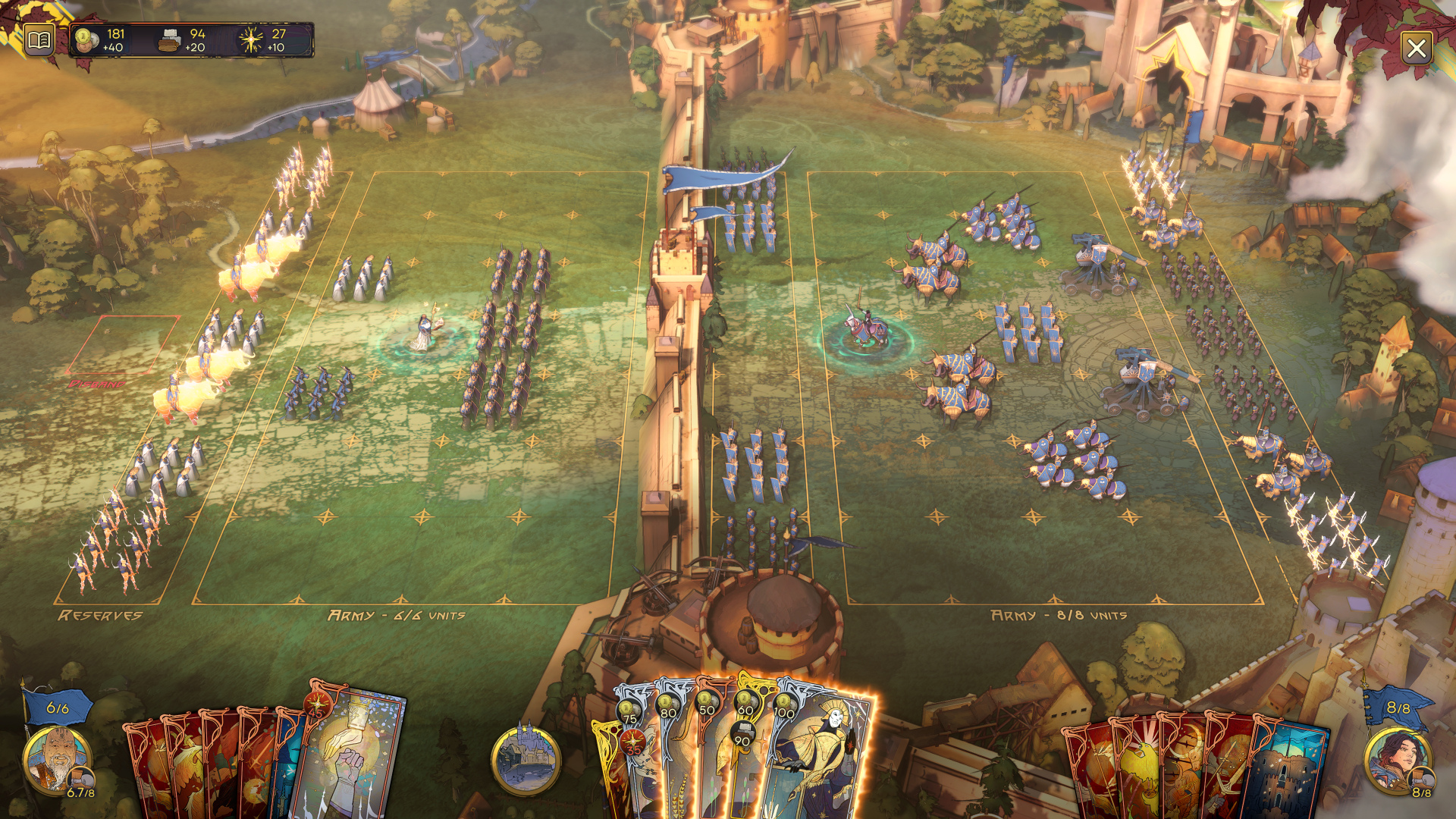
Silent Knight
I spent the bulk of my playtime with Song of Silence in the campaign, where the eight missions will pit you against a deceptively impressive number of scenarios. The core of the story follows the concept of corruption, with a sweeping Crusader army causing silence to curse the land. The Firstborn and Starborn, who have been at war for an age, must combine their strength and overcome their differences, or lose their hymns and be consumed by Silence.
As background lore, Song of Silence’s universe is compelling. Across the two playable factions (you can also play Crusaders in skirmish/online), the heroes have engaging back-and-forth discussions and there’s a genuine tension that’s created. The stealth orientated levels slow the pace to an unfortunate crawl, but when you’re let loose to build a kingdom, it’s really good.
Additionally, across the maps are side quests, NPC factions you can win over to your cause, and plenty of random encounters. It’s a solid foundation for the game itself, and will provide some context for when you’re launching rocks and slinging magic at enemies in the other modes. However, we need to address the issues that leave this army fending for itself without reinforcements on the horizon.
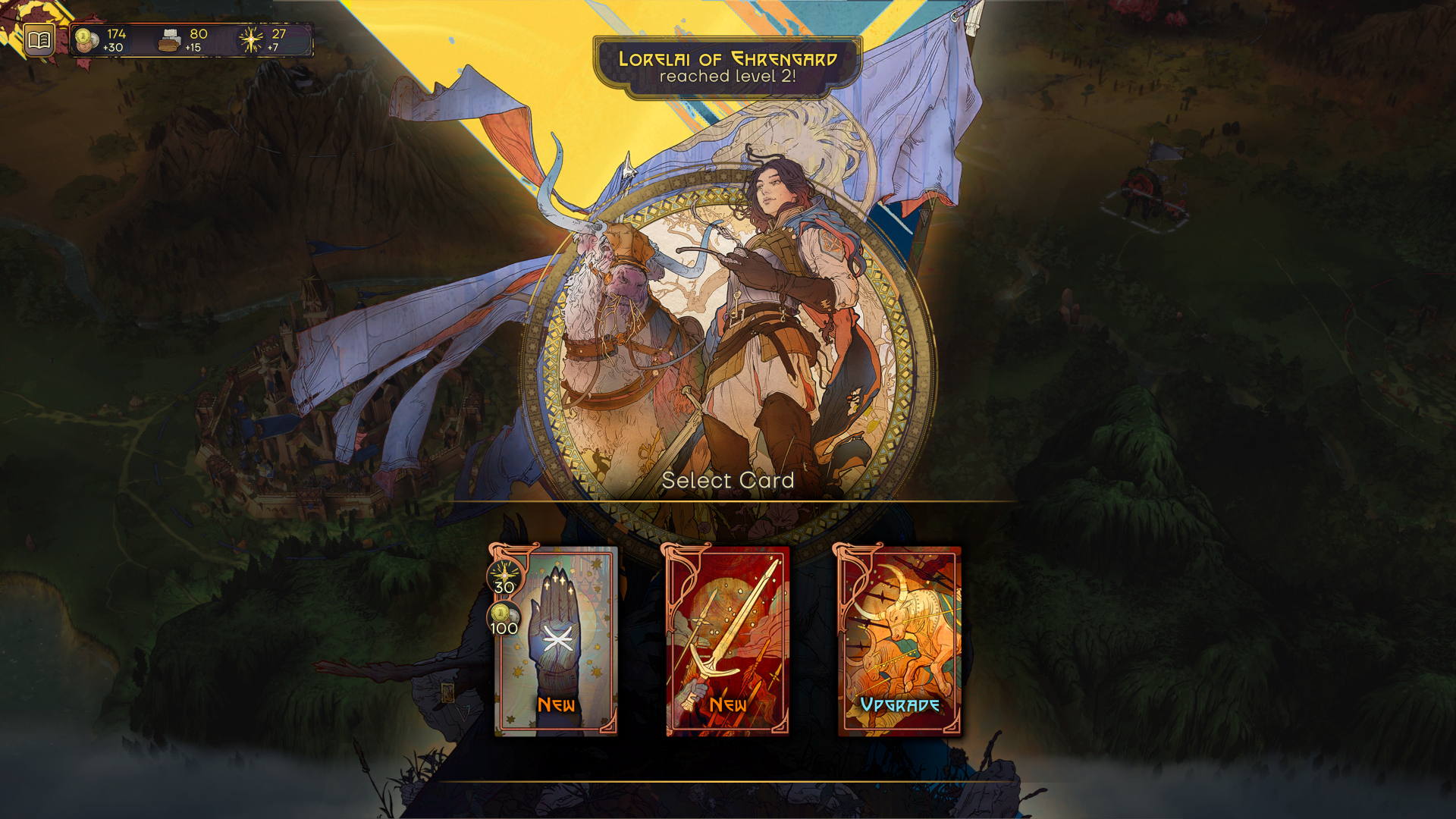
A Broken Chord
For most players, the first and biggest problem you’ll likely run into, is the technical performance. Once a mission or skirmish reaches a certain point, which is usually when there’s multiple armies and heroes that have grown rather large, the framerate struggles like a bow string being held back for a day. During my later play sessions, the game would become nigh-on unplayable with the stuttering input lag.
It got so bad in fact, that Songs of Silence wasn’t even able to save reliably. I never lost progress, as you can wait out the problem (one save took over 5+ minutes to actually complete), but it’s a real hassle and could likely cause corruption. My second biggest issue came later in the campaign and in the skirmish mode – the wildly brutal and uncompromising difficulty spikes. More like cliffs, to be completely honest.
Mission 6’s final battle is probably one of the worst experiences I’ve had in video games for a long while. It’s so insanely ludicrous in fact, it took me 16 assaults by fully forced armies and repeatedly keeping them under siege to prevent more reinforcements tearing me apart. There’s no build up to this, it just happens, for no apparent reason. It’s going to be a progression-killer for a lot of players, but I expect this will be tuned down as it feels more like a bug than an intended difficulty curve.
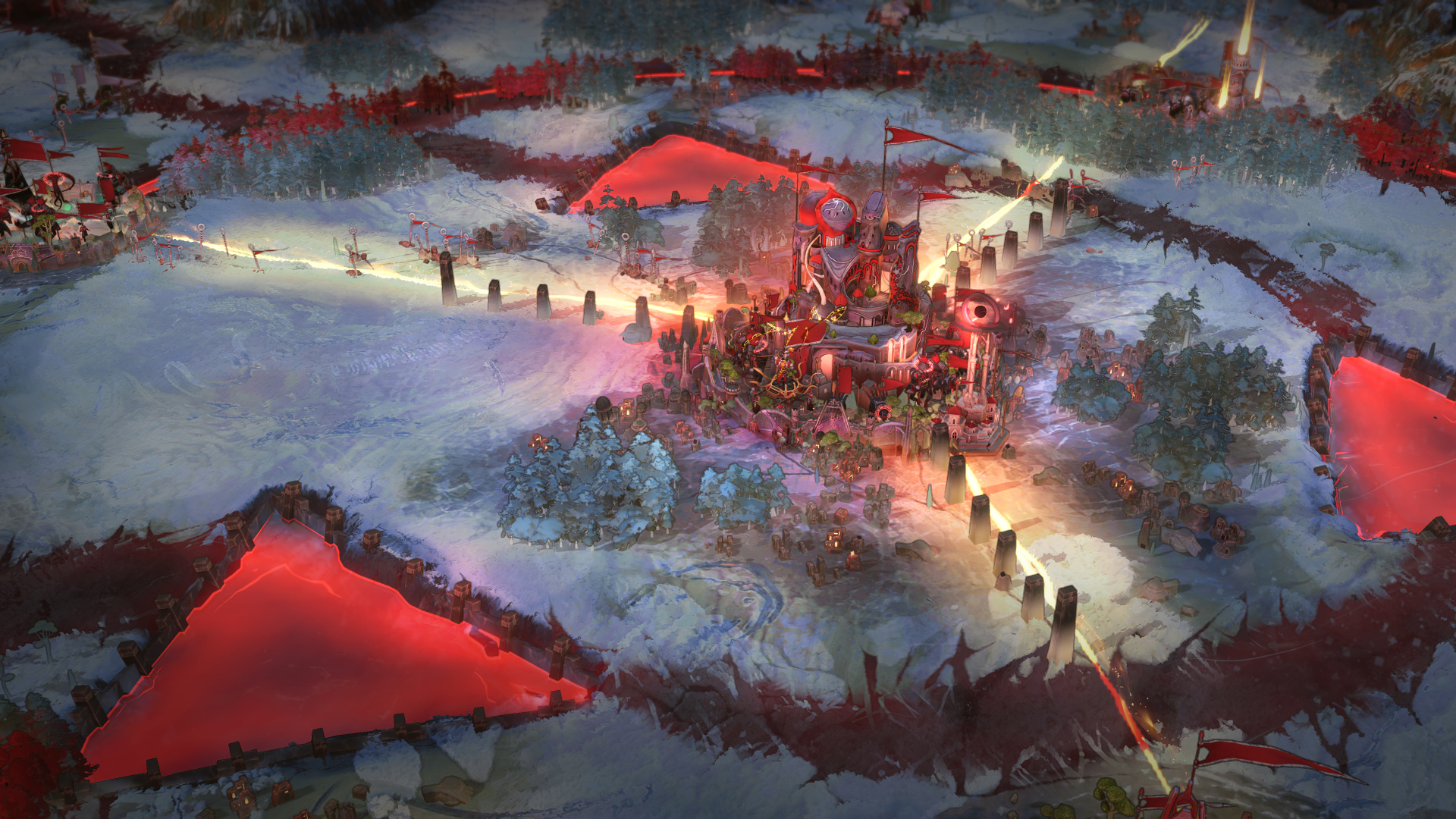
Silent Serenity
With all that said, I still thoroughly enjoyed laying siege to castles, warding off the corruption and experimenting with the three factions in this unique universe. I often felt like a conductor rather than one of the musicians in this choir of strategy and battle, guiding as opposed to micro-managing the gameplay. Conductors are essential to the overall flow and output of the musical collective however, and that comes through in Songs of Silence.
The combination of modes, depth of the factions, heroes and abilities, as well as the challenging AI, means there’s plenty of replayability value. The art style is bold across the board and I really digged the faction designs. The Eyeless for example are gleaming beacons of light, yet have a slight body horror vibe to them, shining a glow on the concept artists’ talents.
I’d be remiss not to emphasise that the game does have problems, though. Technically it falters under the weight of so much processing and the way in which it rams you head first off a cliff at random moments will demotivate more than a few players. Stick with it though, and Songs of Silence will provide you a rich world and plenty of action to keep you coming back for more.
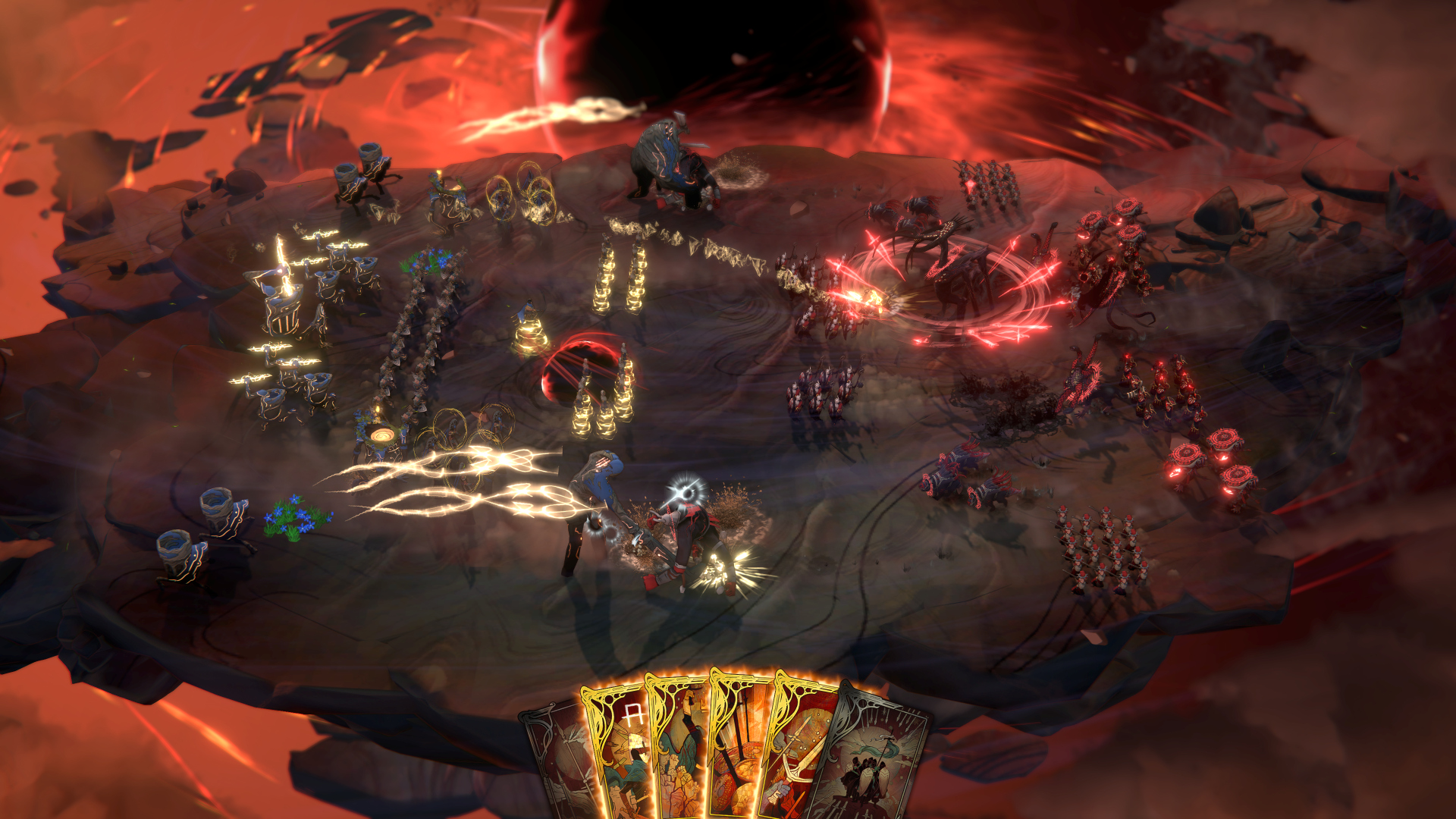
Songs of Silence is available now on PlayStation 5 (review platform), Xbox Series S/X and PC.
Developer: Chimera Entertainment
Publisher: Chimera Entertainment
Disclaimer: In order to complete this review, we were provided with a promotional copy of the game. For our full review policy, please go here.
If you enjoyed this article or any more of our content, please consider our Patreon.
Make sure to follow Finger Guns on our social channels –Twitter, Facebook, Twitch, Spotify or Apple Podcasts – to keep up to date on our news, reviews and features.
